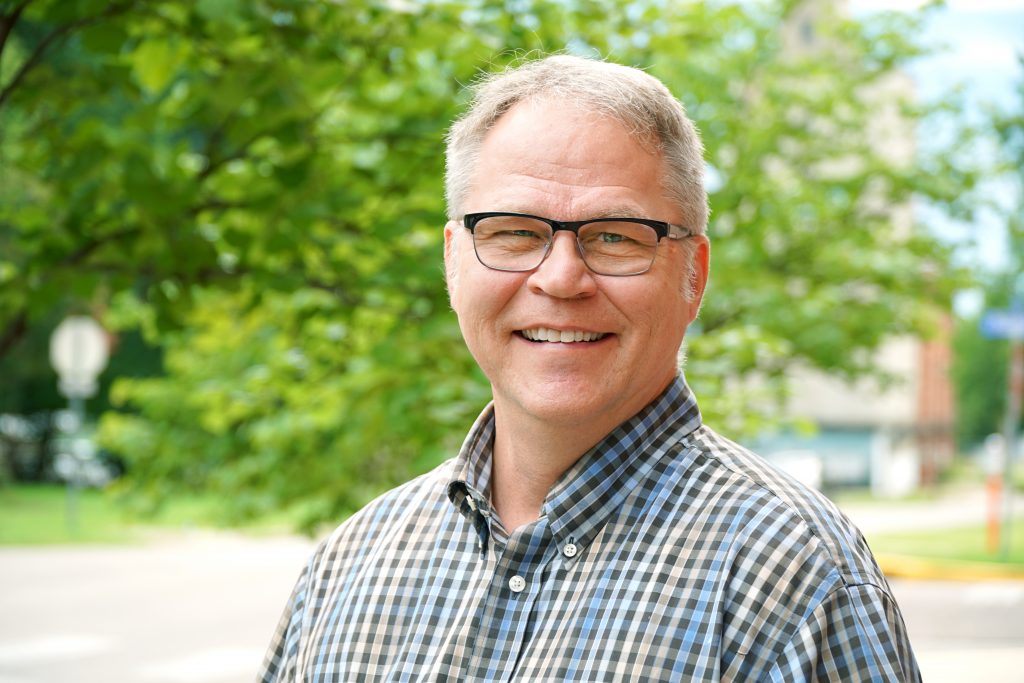Drew Brooks – Faith Partners Director
It was 1988, I remember it as if it were yesterday – I had given my testimony in a worship service of the church I had attended since childhood. It was a daunting task to offer my personal story to what seemed like a sea of stoic faces with only an occasional smile. After the service, per our tradition I stood at the narthex door and shook the hands of people leaving the sanctuary – giving them a sign of peace and fellowship. I experienced two very different responses from the congregation. The first reaction ranged from a quick handshake with little eye contact to finding the other three exit doors avoiding any contact at all. The other response was from both stranger and lifelong family friend alike – offering their heartfelt appreciation or telling an emotional story of family members who had experienced similar issues. The second response has carried me this far.
I realized parts of my story made people uncomfortable, but have discovered these were very important and vital parts of my faith journey. I also recognized even though I was in my thirties few people in the church really knew me. After eight years in recovery and experiencing receptiveness in some corners of my church, my pastor invited me to tell my faith journey warts and all. What made it difficult that day – was the discrepancy between my observations as a youth of how people seemed all put together and knowing the struggles of these very same families. At this time, the faith community didn’t seem like the place to talk about brokenness. Despite this history, with a newfound boldness – I was entering into the world of advocacy and healing on a new level.
Advocacy in its purest form is simply speaking in favor of something or someone. The American Cancer Society identifies five levels of advocacy: self, case, public, administrative, and legislative. My experience is that individuals progress through these levels as they grow in their own self-confidence, knowledge, and healing. The first level is self-advocacy – this is often where it starts – something we do when we speak up for ourselves. We need to first be comfortable with our own story and then begin to share it with others we trust. In the faith community, this can happen in a one-to-one conversation, a prayer, a class, a Bible study, committee meeting, or worship service. It became my experience that breaking the silence; we could enjoy recovery more fully. We begin to take care of ourselves and advance further by helping others.
This leads to the next level described as case advocacy, which often involves helping someone deal with a complicated situation. This is 12-Step work, which in Alcoholics Anonymous reads; “Having had a spiritual awakening as a result of these steps, we tried to carry the message to others, and to practice these principles in all our affairs.” In other words, “You can’t keep it unless you give it away” or “Faith without works is dead.” Often the first to seek help is a motivated family member. The faith community can help by being ready to reach out a hand to those who suffer and help guide them to the needed resources in their congregation or in the community.
Public advocacy, which works to educate the community and start the conversation, is critical to creating understanding. Permission to openly discuss alcohol and drugs, without automatic judgments, is the hallmark of a healthy and healing congregation. Conversations about addiction were often rare and uncomfortable in most congregations. Though one family in three have direct experience with someone with an addiction experience, the subject is seldom raised.
Addiction disease strikes with equality individuals and families of every faith, every culture, every income level and every community, a subtle taboo keeps the subject in the closet until a crisis occurs.
The faith community has a special role to play in the prevention, intervention, and assistance in the recovery process of alcoholism and other addictions. One major step in organizational advocacy is the development of a position statement that highlights the faith community’s beliefs about these issues. When the church is a nurturing supportive community addressing spiritual needs, prevention and intervention of addiction issues can occur.
Many people hesitate to get involved in advocacy because they equate it with the fifth level of advocacy, legislative advocacy. Often that can include activities some aren’t comfortable with, such as demonstrations on the courthouse steps or a public protest. These are legitimate advocacy strategies, but they are only part of the story.
Advocacy covers a range of activities broad enough to include just about everyone, in just about any kind of setting. Many advocacy activities are things we already do for our neighbors, our friends, and ourselves. Legislative advocacy just carries it into the public arena. It is vital for citizens to speak out on certain policies and laws throughout our country, but in my experience, this is often not where a person starts in finding their voice. The first step is getting comfortable and embracing our own story then sharing it with a friend, a family member, a clergy, or a supportive group of people. Hopefully, that means within your own congregation.
Drew Brooks is Executive Director of Faith Partners, a national organization that equips people of faith to serve with an informed, compassionate response to the risk and prevalence of addiction.

